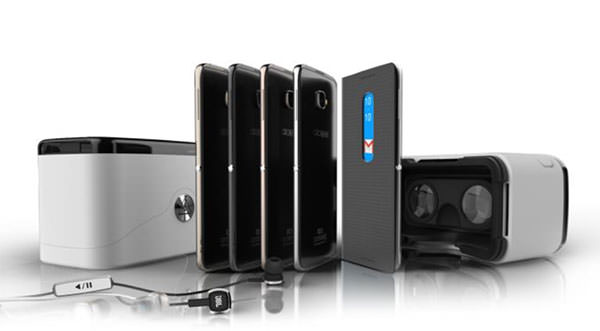The two new Alcatel products may then be combined with a VR viewer specially developed by the company, so as to extend the flexibility of use and become a door of not too expensive access to the virtual reality.
Alcatel is the first company to announce innovations at Mobile World Congress in Barcelona, an event which will open officially tomorrow but Sunday 21 lives a day marked by numerous ads and press conferences. Alcatel has upgraded its smartphone Idol family by presenting two new models, Idol 4 and Idol 4S, respectively characterized by diagonal display of 5.2 and 5.5 inches.
Idol 4 uses a SoC Qualcomm Snapdragon 617 with 8-core Cortex A53 architecture, combined with 3 Gbytes of DDR3 memory LP. The 5.2-inch screen has a resolution of 1,920×1,080 pixels and uses IPS technology; the front camera is 8 megapixels and the rear 13-megapixel, while the battery has a capacity to 2,610 mAh. The onboard storage has 16 Gbytes of capacity, expandable through a MicroSD memory card.
For Idol 4S model, we find 5.5-inch screen with 2,560×1,440 resolution, AMOLED type, SoC Qualcomm Snapdragon 652 with four core Cortex A72 combined 4-core Cortex A53 always with 3 Gbytes of system memory. The front camera is 8 megapixels and the rear is a model to 16 Mpixels; the battery increases up to 3,000 mAh so as to face the top of the screen diagonal, and also changes the GPU Adreno 405 from the solution integrated into Idol 4 passes to the Adreno 510. For both the operating system is Google Android, in release 6.0 Mashmellow.
Alcatel has chosen to support with both terminals use as viewers for virtual reality, providing bundled a special plastic case similar in concept to Gear VR of Samsung. This allows you to use the two new terminal’s Idol in a different form, and potentially more and more widespread, than traditional smartphone as well as we have been accustomed to using them.
Even in the face of different technical specifications the two terminals are characterized by the same thickness, 8.2 millimeters, and a weight of 142 grams. This choice is linked to the presence of the VR viewer developed by the company, which in this way can be adapted to both smartphones.
The construction involves the use of aluminum for the chassis, while the Boom Key button can be configured by the user to perform different types of operations such as taking a picture or send a live streaming video. At present, there is no information on the release schedule and the expected prices for the market.

